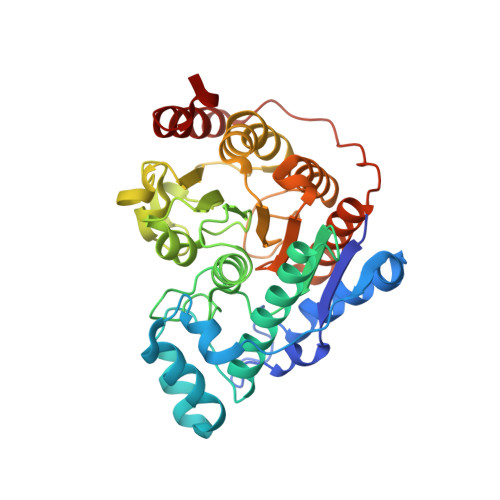Entropy as a Driver of Selectivity for Inhibitor Binding to Histone Deacetylase 6.
Porter, N.J., Wagner, F.F., Christianson, D.W.(2018) Biochemistry 57: 3916-3924
- PubMed: 29775292
- DOI: https://doi.org/10.1021/acs.biochem.8b00367
- Primary Citation of Related Structures:
6CSP, 6CSQ, 6CSR, 6CSS - PubMed Abstract:
Among the metal-dependent histone deacetylases, the class IIb isozyme HDAC6 is remarkable because of its role in the regulation of microtubule dynamics in the cytosol. Selective inhibition of HDAC6 results in microtubule hyperacetylation, leading to cell cycle arrest and apoptosis, which is a validated strategy for cancer chemotherapy and the treatment of other disorders. HDAC6 inhibitors generally consist of a Zn 2+ -binding group such as a hydroxamate, a linker, and a capping group; the capping group is a critical determinant of isozyme selectivity. Surprisingly, however, even "capless" inhibitors exhibit appreciable HDAC6 selectivity. To probe the chemical basis for this selectivity, we now report high-resolution crystal structures of HDAC6 complexed with capless cycloalkyl hydroxamate inhibitors 1-4. Each inhibitor hydroxamate group coordinates to the catalytic Zn 2+ ion with canonical bidentate geometry. Additionally, the olefin moieties of compounds 2 and 4 bind in an aromatic crevice between the side chains of F583 and F643. Reasoning that similar binding could be achieved in the representative class I isozyme HDAC8, we employed isothermal titration calorimetry to study the thermodynamics of inhibitor binding. These measurements indicate that the entropy of inhibitor binding is generally positive for binding to HDAC6 and negative for binding to HDAC8, resulting in ¡Ü313-fold selectivity for binding to HDAC6 relative to HDAC8. Thus, favorable binding entropy contributes to HDAC6 selectivity. Notably, cyclohexenyl hydroxamate 2 represents a promising lead for derivatization with capping groups that may further enhance its impressive 313-fold thermodynamic selectivity for HDAC6 inhibition.
Organizational Affiliation:
Roy and Diana Vagelos Laboratories, Department of Chemistry , University of Pennsylvania , 231 South 34th Street , Philadelphia , Pennsylvania 19104-6323 , United States.


















